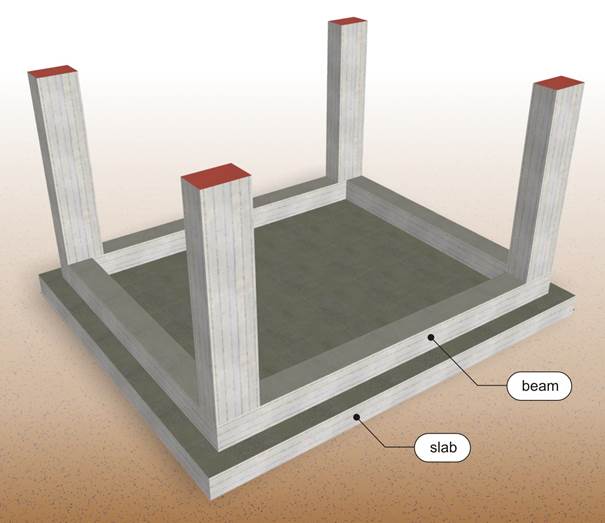
<project: Foundation50>
In poor soil conditions a slab which extends over the entire loaded area, the so called raft foundation, is usually preferable. Frequently it is used in other soil conditions for practical reasons basically because of its fast and easy construction.
Raft foundation may have normal foundation beams as ribs, as shown in the above figure, or beams embedded into the foundation as hidden beams.
The usual thickness of a raft foundation, ranges from 400 to 1000 mm, while the dimension of the raft foundation beams vary from 300x800 to 500x2000 mm.